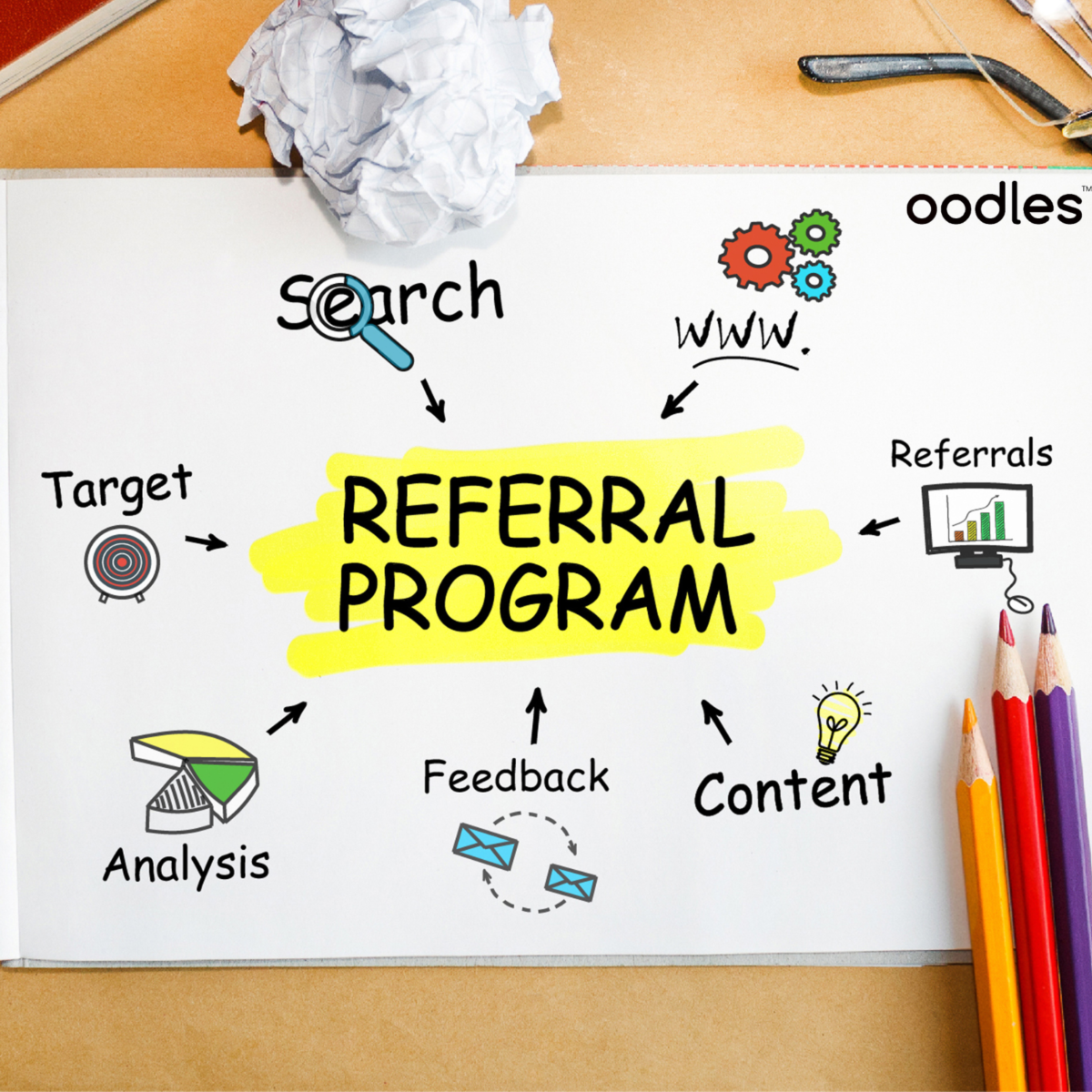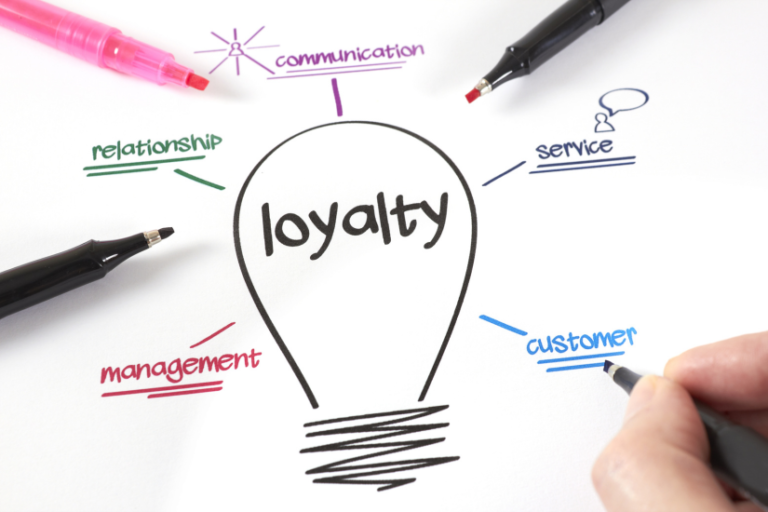
A referral program is a cost-effective and efficient way for businesses to reach new customers beyond their traditional marketing channels. It allows you to tap into customer segments that may be challenging to reach through paid advertising, email marketing, or across different countries. By encouraging customers to refer your products or services to others, you can leverage the power of customer referral marketing to expand your customer base without relying on costly advertising campaigns.
How to Convert Visitors into Customers with Loyalty and Rewards Programs
Loyalty and rewards programs are a great way to convert visitors into customers and boost brand loyalty. By offering rewards for repeat purchases, referrals, and other activities, you can encourage customers to return to your business.
Introduction
In today’s competitive marketplace, finding ways to keep customers returning for more is more critical than ever. Loyalty and rewards programs are a great way to do this, as they offer customers a tangible incentive to continue doing business with you.
- Summary section:
In this blog, we’ll discuss the benefits of referral programs and how they can help businesses acquire new customers. We’ll also provide some tips for creating an effective referral program.
Key takeaways:
- Referral programs can benefit businesses by providing a cost-effective way to acquire new customers.
- They can help businesses build brand awareness and increase customer loyalty.
- Suppose a business wants to make the most of its referral program. In that case, it should focus on three key elements: providing value to those who refer and are referred, building a solid community, and gaining valuable customer insights. Businesses should consider offering affordable and appealing incentives, testing different rewards to see what works best, and surveying customers to get feedback on what they find most valuable. Additionally, including statistics or case studies showing the benefits of referral programs can help businesses make a stronger case for investing in community initiatives and capturing valuable customer insights.
Benefits of Loyalty and Rewards Programs
There are many benefits to implementing a loyalty and rewards program. Some of the most common benefits include:
- Increased customer retention: Loyalty programs can help retain customers by giving them a reason to keep returning to your business. When customers know they’ll earn rewards for repeat purchases, they will likely stay loyal to your brand.
- Increased sales: Loyalty programs can also help you increase sales by encouraging customers to spend more money. When customers know they’re earning rewards, they’re more likely to purchase more products or services from your business.
- Implementing a loyalty program can improve customer satisfaction as it allows you to show appreciation for your customer’s business and foster stronger relationships with them. When customers feel valued, they’re more likely to be satisfied with your business and to continue doing business with you.
- Increased brand awareness: Loyalty programs can also help you increase brand awareness by giving your customers a reason to discuss your business. Customers who earn rewards for their purchases are more likely to tell their friends and family about your business.
Challenges of Implementing a Referral Program
- Finding the right incentives: Your incentives should be valuable enough to motivate customers to refer their friends and family. However, they should also be affordable for your business.
- Promoting the program: You need to ensure that your customers know your referral program and how to participate. You can promote your program through your website, email marketing, social media, and in-store signage.
- Tracking the results: It’s essential to track the results of your referral program to see what’s working and what’s not. This medium will help you make necessary adjustments to your program.
- “There are a few challenges that businesses may face when implementing a referral program, such as finding the right incentives and promoting the program effectively. However, these challenges can be overcome by careful planning and execution.”
Learn more about how referral programs can help your business grow.
Examples of successful referral programs:
There are many examples of successful referral programs. For example, Dropbox offers users 500MB of free storage space for every friend they refer. Airbnb gives users $25 credit for every friend who books a stay through their referral link. And Amazon offers Prime members 20% off their first purchase from a friend who is a new Prime member.
Ooodles, an all-in-one app for e-commerce merchants like Shopify, also offers a referral program that allows businesses to reward customers for referring new customers.
Tips for Creating a Successful Referral Program: Here are some tips to help you create a successful referral program:
- Choose the Right Rewards: Select rewards that are valuable to your customers and motivate them to participate. Consider discounts, free products, exclusive content, or early access to new offerings.
- Simplify Participation: Ensure the sign-up process for your referral program is simple, and make it easy for customers to track their progress and redeem rewards.
- Promote Your Program: Effectively promote your referral program through various channels, such as your website, email marketing, social media platforms, and physical signage.
- Measure Your Results: Regularly track and analyze the results of your referral program. Monitor the number of referrals, conversion rates, average order value, and customer lifetime value to assess its success and make necessary adjustments.
Metrics to Track
- Number of referrals: This is the most basic metric to track. It tells you how many new customers your referral program is generating.
- Conversion rate: This metric tells you how many referrals you’ve generated have converted into customers.
- Average order value: This metric tells you how much money each customer referred by another customer spends on average.
- Customer lifetime value: This metric tells you how much money a customer is worth to your business over their lifetime.
“The number of referrals is a good metric to track overall program growth. However, it’s also important to track the conversion rate, average order value, and customer lifetime value to get a more complete picture of the program’s success.”
Why Referral Programs are Essential
Referral programs offer numerous benefits for businesses:
- Generate Word of Mouth Campaigns: When customers refer your brand to their friends and family, they become brand advocates, increasing brand awareness through positive word-of-mouth.
- Increase Customer Loyalty: Satisfied customers who participate in your referral program tend to remain loyal and continue doing business with you.
- Acquire New Customers: By incentivizing referrals, you encourage existing customers to bring in new customers, effectively expanding your customer base.
The Customer Acquisition Strategy
Gaining new customers is essential for any business’s expansion and long-term viability. While traditional methods like paid advertising have their place, referral programs provide an opportunity to acquire customers without incurring additional costs. If you can effectively generate more referrals, you can attract new customers without relying solely on paid advertising or cold outreach efforts. The best part is that referral marketing is free, as existing customers willingly recommend your brand to others.
Leveraging Word-of-Mouth Marketing
Word-of-mouth marketing is one of the most influential and credible forms of advertising. It can help you generate new leads and convert existing customers into advocates for your brand. With a referral program, you can involve your existing customers in marketing by encouraging them to spread their favorable experiences with friends and family. It expands your customer base and builds trust and credibility among potential customers.
Creating a Memorable Brand Experience
Creating a positive and memorable brand experience at every touchpoint is essential to encourage customers to refer to your brand. Ensure that every interaction with your business leaves a lasting impression, as satisfied customers are more inclined to endorse your products or services to others. Avoid any negative experiences that could discourage referrals.
Authenticity and Value in Referral Programs
When implementing a referral program, being genuine and providing value to referrers and referees is crucial. Customers can sense when businesses focus exclusively on gaining referrals without considering their needs and interests. Create an irresistible referral program that offers valuable incentives, making it worthwhile for customers to share their referral links with friends and family.
Building Your Community
While advertising is often the primary method for customer acquisition, referral programs can be highly effective for generating sales from existing customers. Referral programs enable you to leverage your existing customer base and tap into their networks. Consider these tips for building an effective referral program:
- Start with Existing Customers and Leads: Reach out to your current customer base and leads to encouraging their participation in the referral program.
- Create a Unique Offer for Referrals: Design an enticing offer that motivates customers to refer your brand to others.
- Encourage Community Engagement: Utilize popular platforms such as Twitter, LinkedIn, and Facebook to engage with your community and encourage new users to join.
- Recognize and Reward Influencers: Identify key influencers within your network and provide limited offers or discounts to encourage their participation and attract new users.
Capturing Customer Insights
Gaining insights about your customers is crucial to design an efficient referral program. It lets you personalize the customer experience, increase lifetime value, and effectively target your marketing efforts. Consider the following methods for capturing customer insights:
- Conduct Conversations: Engage with customers through in-person interactions, phone calls, or emails to understand their motivations, preferences, and feedback.
- Implement Surveys: Send short surveys to collect feedback from previous customers, asking them to rate your products or services and their likelihood of recommending your business to others.
Harnessing the Power of Friends and Family
To maximize your return on investment, focus on leveraging the influence of friends and family. Referrals from trusted individuals hold significant weight and are more likely to convert into customers. Friends and family members are more inclined to share your content online, increasing its perceived value and credibility. By tapping into this network, you can effectively overcome barriers to trying something new and attract new customers.
Conclusion:
Referral programs offer a powerful strategy for acquiring new customers and expanding your customer base. By implementing a well-designed referral program, you can leverage the influence of word-of-mouth marketing, increase customer loyalty, and generate sustainable growth for your business. Remember to provide value to referrers and referees, simplify the referral process, and continuously track and optimize your program based on the results. With careful planning, effective promotion, and continuous evaluation, your referral program can be a key driver of customer acquisition and long-term business success.
Start Acquiring New Customers Today with Oodles All-in-One App:
Finding the right topics and implementing a successful referral program can easily be achieved with the right tools. Oodles, the all-in-one app powered by AI chatbot, loyalty & rewards, referrals, SMS Marketing, and omnichannel solutions, provides a comprehensive suite of features to help you streamline your content creation and referral program implementation.
Sign up for Oodles All-in-One App today and take your content strategy and customer acquisition to new heights with AI chatbot, loyalty & rewards, referrals, SMS Marketing, and omnichannel capabilities.

